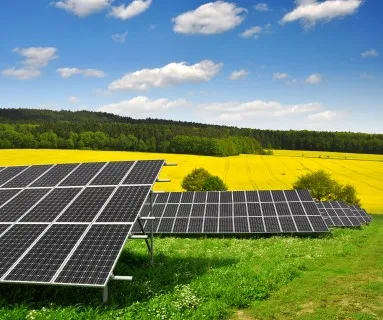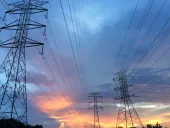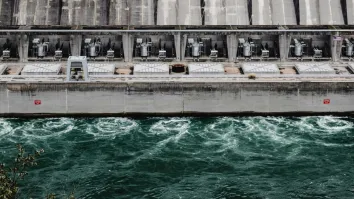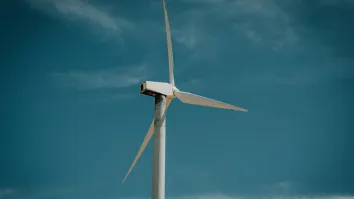
The sunny prospects and hazy risks of Thailand's next stage of solar growth
Sustaining the momentum will mean grappling with current overcapacity and a scrutinising regulatory merger regime.
Thailand has installed nearly 3 GW of solar power capacity, more than all other countries of the ten-member Association of Southeast Asian Nations, or ASEAN, combined. Moreover, the country looks to potentially triple its solar power capacity as it looks to renewables to help meet an expected surge in energy demand. But one key challenge is that its current mechanism for supporting renewables, the auctionbased SPP Hybrid Firm program “represents a rather limited opportunity for ‘pure’ solar PV,” said Matthew Heling, head of energy consulting, Asia Pacific at Poyry.
Solar rooftop heats up
Heling noted that the program requires ‘firm’ output, has a limited quota, and is also open to other renewable technologies that tend to better fit the ‘firm’ requirement such as biomass. The situation has been further complicated by the current overcapacity in Thailand’s power market, which Heling said was likely one of the drivers for the government to recently announce it will no longer procure any new solar and wind for the next five years under the assertion that solar and wind are putting an upward pressure on wholesale electricity rates.
As the solar sector deal with these headwinds, a bright spot remains: Rooftop solar PV continues to grow and could accelerate further on the back of potential stronger support mechanisms. “Whilst individual system sizing is limited by the current lack of export compensation, the Thai regulator has hinted that it may soon allow some level of export compensation for (at least) residential consumers,” said Heling, noting that more details could be shared when the revised Power Development Plan is released likely within the next several months.
Prasert Sinsukprasert, deputy director-general of the Energy Policy and Planning Office, had reportedly said solar rooftop installations and biomass projects would probably account for a significant part of the additional sources of green power in Thailand because other parts of the renewable power sector are becoming saturated. Notwithstanding this potential economic incentive, solar rooftop installations present a good investment proposition for some manufacturing firms.
“Thai companies in the manufacturing sector can utilise rooftop solar not only to improve their environmental profiles but also to lower their operating costs,” said Dr. Ulrich Eder, managing director of Pugnatorius Ltd. “This offers attractive opportunities, amongst others, for foreign investors in Thailand’s solar energy industry.”
Eder reckoned solar rooftop installations are already widely popular in Bangkok as well as the various production plants in the country’s Eastern seaboard. “The owners of factories, buildings, and residences have installed solar rooftops to produce their own electric power and cut back on expenses,” he said. “Reductions in technology prices and innovative financing structures help to make government subsidy programmes unneeded and obsolete and made PV competitive with fossil fuel energy sources.”
Renewable technology has improved dramatically during the past five years which could bring down investment cost, especially for solar power, to a more investible level, said Chaipat Thanawattano, analyst at DBS. Cheap funding cost during the low interest cycle globally helped enable this trend, Thanawattano noted, which pushed the government to alter the tariff scheme for renewable power plants to FiT. Whilst the FiT is a much lower rate, albeit for a longer period, the regulator has insisted that this will still provide favourable return to investors, he said.
Floating solar makes waves
In 2018, there are several notable business opportunities for solar projects, from solar rooftop investments to new solar farm biddings. Of these, floating solar farms “could be the next big thing,” said Nutavit Sirikan, attorney-at-law at Tilleke & Gibbins International, citing estimates that around 3% of Thailand’s total area is water surface that could be developed for floating solar farms.
Eder said floating solar farms hold the advantage of generating renewable energy without taking up space that could be allotted for farming or other land-based economic activities. And compared with a ground-based solar farm, floating solar farms benefit from the cooling and cleaning effect of the water, which helps keep the solar panels running at a high efficiency, he added.
The Electricity Generating Authority of Thailand is launching a floating solar farm in Wong Noi Power Plant’s Reservoir, in Phra Nakhon Si Ayutthaya province. The project has an installed capacity of 2.6 MW on an area of 20 rai, or 32,000 sqm. A smaller and merely experimental site has been developed on a pond at Rayong’s Map Ta Phut Industrial Estate. About THB 3.6 billion baht, or US$114.7 million, was reportedly invested for the project.
Private investment still key
Whilst solar rooftop installations and floating solar farms could fire up investor appetite, Thanawattano held a less sanguine investment outlook for the whole renewable sector owing to expectations of excess power supply for at least the next eight years due to slow economic growth. The sector also faces key risks such as the uptrend of interest rates and the return on investments on new projects under development.
“Renewable power projects should remain in focus in the private sector, being the only segment which still requires more investment but this would be interesting for smaller investors,” said Thanawattano, noting that this has prompted larger operators to seek investment opportunities overseas, mainly in neighbouring and ASEAN countries such as Myanmar, Indonesia and the Philippines.
But he flagged the regulatory risk associated with such moves, especially when investing in countries with “peculiar and unstable” power industry regulations. In response, private operators will likely form more partnerships to develop these large overseas projects, mainly to diversify their risks.
Sirikan said that the energy ministry has made clear in its Power Development Plan 2015 that private investment will play a crucial role in driving electricity generation capacity expansion to meet Thailand’s rising energy demands. In 2017, Thailand’s policy makers raised the country’s renewable energy target to 40% of the energy mix, up 15 percentage points from the previous 25% target, by 2036 as part of its revision to the Alternative Energy Development Plan. The new target would mean the country’s total renewable power generating capacity would be increased to 40 GW by 2036 from 19.6 GW under the previous plan.
Consolidation on the horizon
Sirikan noted that much of the 10GW of additional capacity since 2012 has been driven by the rising number of small power producers, or SPPs, withinstalled capacity for SPPs climbing nearly threefold to 7.5GW in November 2017 from 2.6 GW in 2012. In fact, SPPs now represent approximately 17.8% of Thailand’s total generating capacity, he said, but he foresees a period of consolidation on the horizon.
“As many SPP projects are reaching maturity and achieving stead, predictable returns for their investors, and as new SPP and very small power producer, or VSPP, projects come online, we can expect a degree of market consolidation as producers aim to achieve economies of scale,” said Sirikan. “With this in mind, it is useful to reflect on Thailand’s preclosing approvals in the energy sector.”
Sirikan noted that investors and companies will need to navigate Thailand’s effective pre-closing merger control regime for licensees which prohibits an entity which has obtained a license from the Energy Regulatory Commission, or ERC, from merging with another licensee without permission from the ERC. Regulation also requires licensees to notify the ERC if they wish into enter into a contract which causes one person to have absolute or partial direct or indirect control of its management, where they are taken over or act to take over, and a where person with control of policies and management of one licensee takes direct or indirect control of another licensee.



















 Advertise
Advertise






